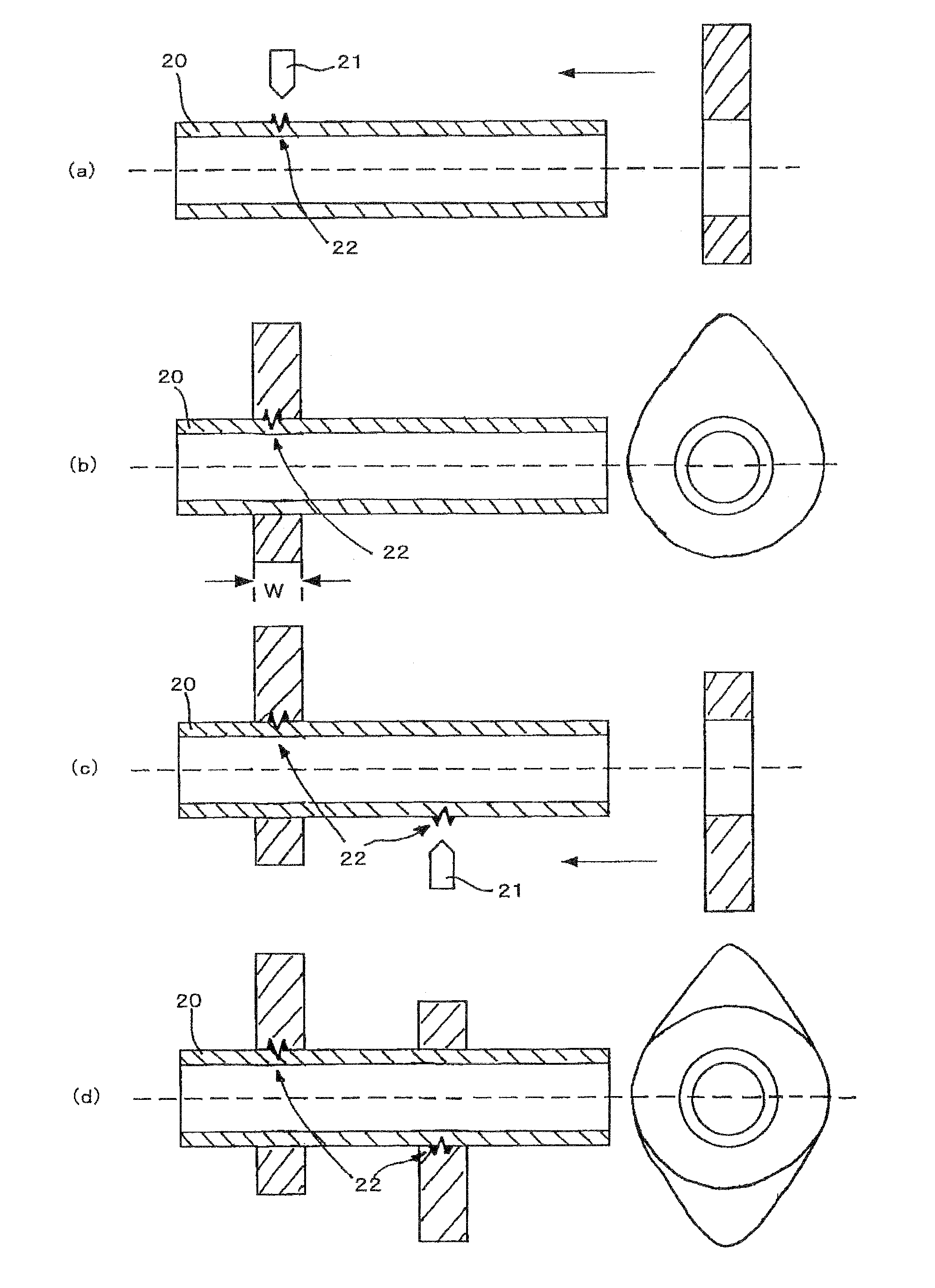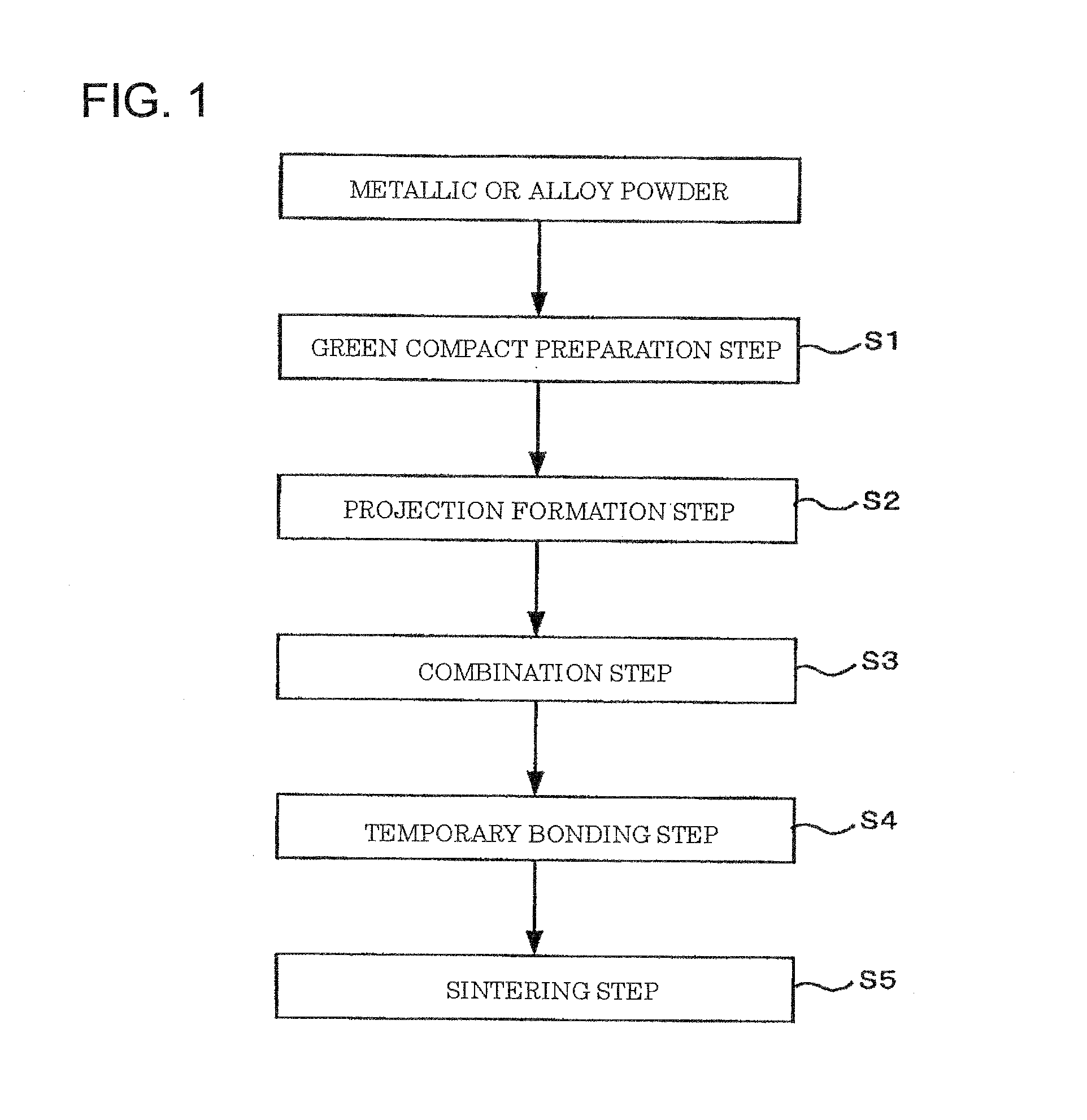Method for manufacturing a shaft member having a sintered part bonded thereto and a camshaft for an internal combustion engine
a technology of internal combustion engine and shaft member, which is applied in the direction of machines/engines, valve drives, gearing, etc., can solve the problems of reducing the strength, the degree of freedom may be decreased, and the strength may be affected, so as to reduce the strength, increase the process yield and degree of freedom in design, the effect of reducing costs
- Summary
- Abstract
- Description
- Claims
- Application Information
AI Technical Summary
Benefits of technology
Problems solved by technology
Method used
Image
Examples
example 1
Conventional Example 1
[0069]The camshafts (each shaft having a single cam lobe) were prepared in accordance with the conventionally known method for manufacturing an assembled camshaft. These camshafts will be hereinafter referred to as “Sample Nos. 13 to 15”, respectively.
[0070]The same conditions of the alloy powder and the shaft as the above-mentioned example were applied.
[0071]The conventionally known method for manufacturing an assembled camshaft comprised the steps of forming a groove extending along the axial direction of a shaft on the outer peripheral surface thereof, forming a projection on an inner peripheral surface of a green compact for a cam lobe, which was to be fitted onto the shaft, fitting the green compact for the cam lobe onto the shaft so as to fit the projection into the groove, and sintering them to bond the cam lobe to the shaft (see FIGS. 1 to 3 of Patent Document 2 as mentioned above).
[0072]Evaluation was made in the same manner as Example 1 as described a...
PUM
| Property | Measurement | Unit |
|---|---|---|
| Length | aaaaa | aaaaa |
| Length | aaaaa | aaaaa |
| Angle | aaaaa | aaaaa |
Abstract
Description
Claims
Application Information
 Login to View More
Login to View More - R&D
- Intellectual Property
- Life Sciences
- Materials
- Tech Scout
- Unparalleled Data Quality
- Higher Quality Content
- 60% Fewer Hallucinations
Browse by: Latest US Patents, China's latest patents, Technical Efficacy Thesaurus, Application Domain, Technology Topic, Popular Technical Reports.
© 2025 PatSnap. All rights reserved.Legal|Privacy policy|Modern Slavery Act Transparency Statement|Sitemap|About US| Contact US: help@patsnap.com



